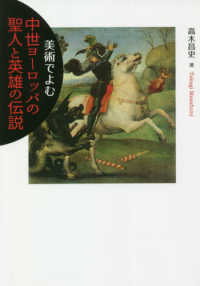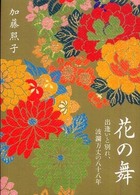- ホーム
- > 洋書
- > 英文書
- > Literary Criticism
Full Description
Thinking in Literature sets out to examine how the Modernist novel might be understood to be a machine for thinking, and further how it might offer means of coming to terms with what it means to think. It begins with a theoretical analysis of the concept of thinking in literature using Gilles Deleuze as a point of departure and returning directly to the work of the two philosophers who were most important to Deleuze's understanding of thinking in literature: Spinoza and Leibniz. Three elements are identified as crucial to aesthetic expression: relation; sensation; and composition. Yet in order to build a fuller understanding of these processes it is necessary to move from theory to specific readings of artistic practice. Uhlmann examines the aesthetic practice of three major Modernist writers: James Joyce, Virginia Woolf, and the young Vladimir Nabokov. Each can be understood as working with relation, sensation and composition, yet each emphasize the interrelations between them in differing ways in expressing the potentials for thinking in literature.
Contents
Introduction Part 1: Literature and Thought 1. Spinoza and Relation 2. Leibniz's 'perception': the Incompossible, the Viewpoint, and the Composition of Sensation 3. Composition as the Externalised Expression of Sensation Part 2: Thought in Modernist Fiction 4. James Joyce: the art of Relation 5. Virginia Woolf: the art of Sensation 6. Vladimir Nabokov: the art of Composition Conclusion Bibliography








